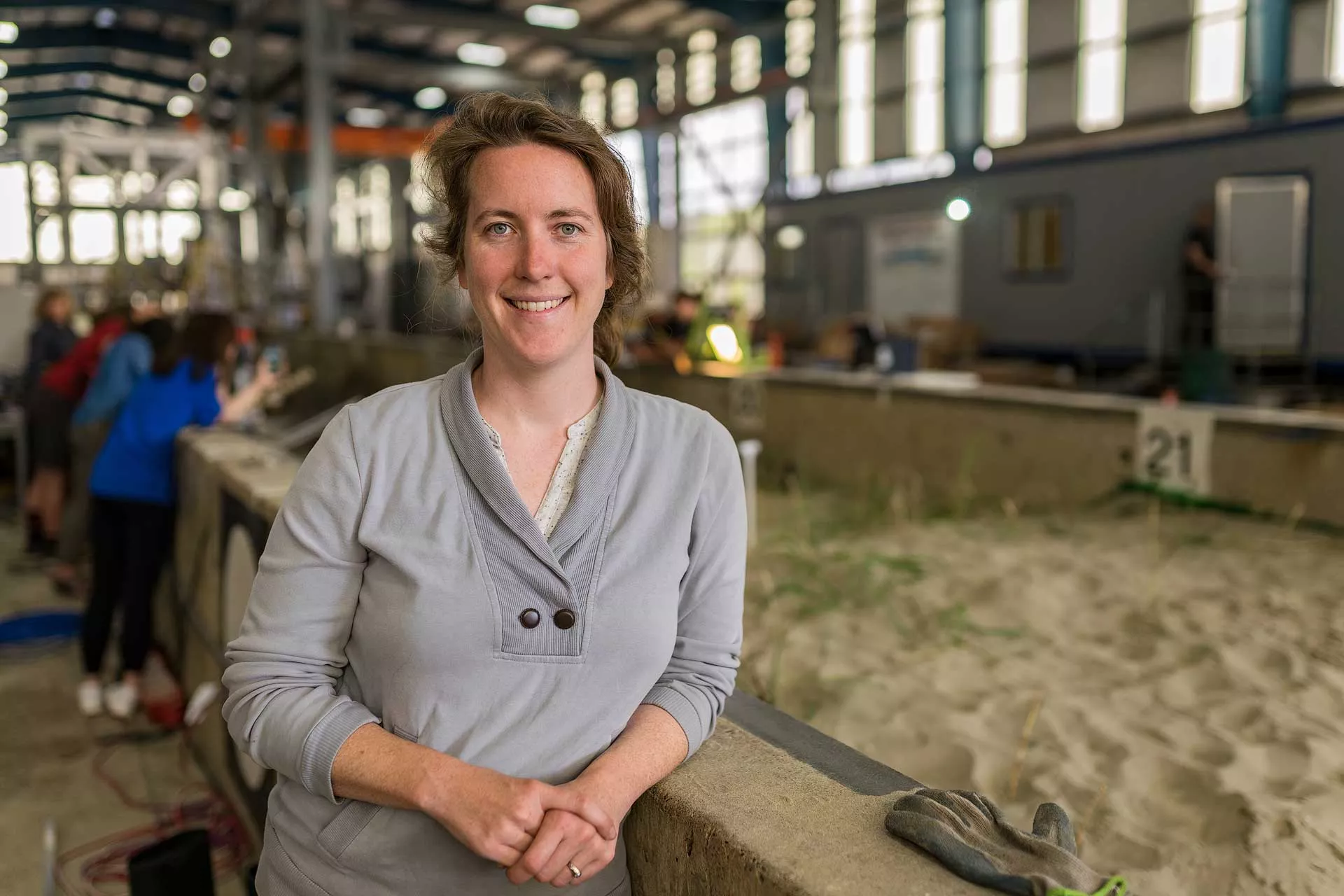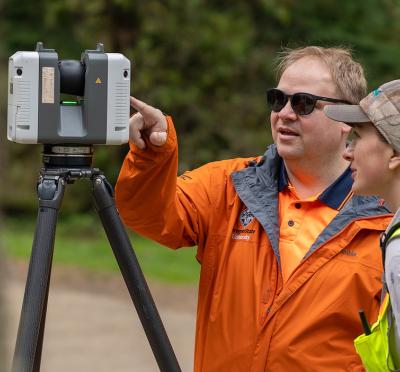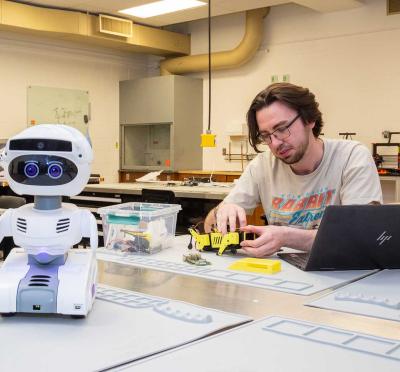Tiny, pressurized bubbles locked in glacial ice may be the reason why glaciers that terminate at the sea are retreating at unprecedented rates.
“We have known for a while that glacier ice is full of bubbles, and we realized those bubbles may be doing a lot more than just making noise underwater as the ice melts,” said Meagan Wengrove, assistant professor of coastal and ocean engineering.
About the Research
In a recent study led by Wengrove, she and colleagues from the College of Earth, Ocean, and Atmospheric Sciences, as well as from Rutgers and the University of Oregon, showed that glacier ice, which is characterized by pockets of pressurized air, melts much more quickly than bubble-free sea ice or the manufactured ice typically used to determine melt rates at the ocean-ice interface of tidewater glaciers. Lab-scale experiments suggest that the bubbles explain part of the difference between observed and predicted melt rates.
Impact of the Findings
The findings carry huge implications for how ice-melt data is folded into climate models, which scientists rely on to predict melt rates. Current models don’t account for bubbles in glacier ice, but NASA still attributes about 60% of sea level rise to meltwater from glaciers and ice sheets. A more accurate characterization of how glacial ice melts could lead to better predictions about the pace of glacial retreat.
“That’s important, because it’s a lot more difficult for a community to plan for a 10-foot increase in water level than it is for a 1-foot increase,” Wengrove said. “Those little bubbles may play an outsized role in understanding critical future climate scenarios.”
Funding for the work came from the Keck Foundation, the National Science Foundation, and the National Geographic Society.

Vegetation’s Impact on Dune Erosion
In another multiuniversity research project funded by the NSF, Wengrove and colleagues concluded that newly planted vegetation accelerates dune erosion during extreme storms. The findings run counter to the widely accepted paradigm that vegetation always acts to reduce dune erosion and is the first line of defense against storms for coastal sand dunes.
In tests conducted at the O.H. Hinsdale Wave Research Laboratory, the research team built beach dune profiles that were 70 meters long and 4.5 meters high and subjected them to storm waves in the facility’s 104-meter-long flume.
“We found that a newly planted coastal dune that does not have a very established root structure scarped faster than a bare dune with the same sand size and compaction,” Wengrove said.
Scarping describes a sand dune, or other type of hillside, that erodes into a nearly vertical slope and becomes inherently unstable.
“We still need to learn more about how different levels of vegetation establishment influence coastal dune vulnerability to wave-driven erosion, but this work is an important step toward understanding the role vegetation plays,” Wengrove said.
Researching Coastal Grasses
In a third research project, Wengrove and colleagues from the U.K. and the Netherlands are aiming to understand how variation in grass species at the molecular level translates into whole landscape changes in terms of topography and resilience.
According to the research team, some species are called ecosystem engineers, because they can drive the formation of novel landscapes. Coastal sand dunes are one such landscape, and they are shaped by the interaction of sand being moved by wind and water and the specialized species of grasses that lock sand into place.
The work is funded by a grant from the Human Frontier Science Program.
The team’s research proposal states: “While we know that different grass species produce different dune morphologies, our understanding of how sand dunes and the species responsible for their bioengineering have co-evolved is incomplete.”
The work will include field measurements, manipulative experiments, and wind tunnel experiments to determine how plant phenotypic variation impacts wind flow dynamics, the ecological limits of the dune grasses, and how it is linked to sediment dynamics.
Coastal dunes protect a third of all shorelines from flooding. The study results will enable the researchers to determine the adaptive potential that the dunes have on mitigating the effects of climate change, including sea level rise and the impact of storm surges.




